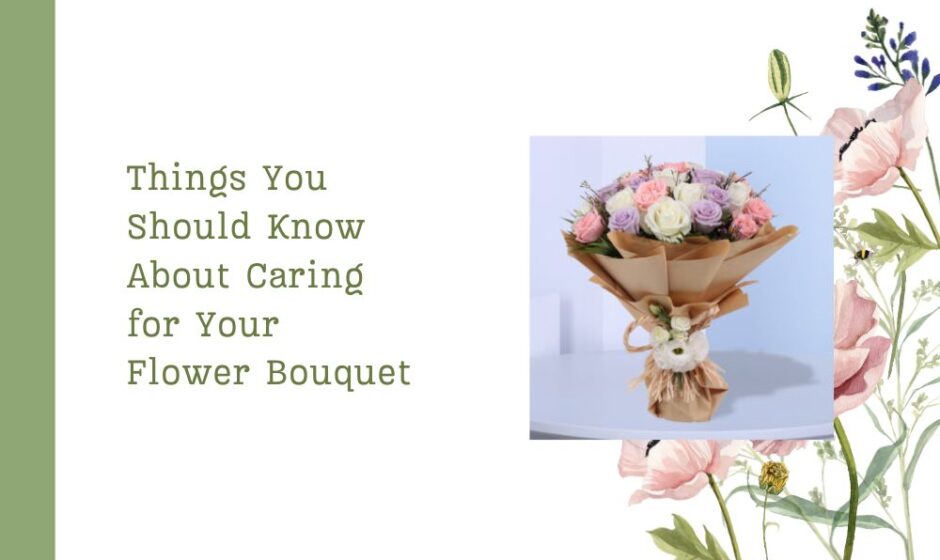Receiving a flower bouquet is always a delightful experience, but the joy doesn’t have to end when the flowers begin to wilt. With proper care, you can extend the life of your bouquet and enjoy its beauty for longer. In this blog, we’ll explore essential tips for caring for your flower bouquet, ensuring that your flowers stay fresh and vibrant as long as possible.
The Basics of Flower Care
The Importance of Immediate Care
The first few hours after receiving a bouquet can significantly impact its longevity. Flowers are most vulnerable when they transition from the florist’s care to your home. Immediate care can help set the stage for a longer-lasting display.
Essential Tools for Flower Care
Having the right tools on hand can make flower care easier and more effective. Here are a few essentials:
- Sharp scissors or pruning shears: For trimming stems.
- Clean vase: To prevent bacteria from contaminating your flowers.
- Flower food: Usually provided by florists, it helps nourish the flowers.
Note:- Are you looking for the perfect flower bouquet Dubai? Call Black Tulip Flowers today! Their professional team is prepared to design magnificent, personalized bouquets for every occasion. Don’t wait—place your purchase today and brighten someone’s day with lovely blossoms!
Step-by-Step Guide to Caring for Your Bouquet
1. Prepare Your Vase
Cleaning Your Vase
Start by using a clean vase to prevent any bacteria or residue from harming your flowers. Wash the vase with soap and warm water before use. This simple step helps to minimize the risk of bacterial growth, which can shorten the life of your bouquet.
Filling the Vase with Water
Fill the vase with lukewarm water, as most flowers absorb warm water more efficiently than cold. This helps the flowers hydrate more quickly after being transported or sitting out for a while.
2. Trim the Stems
Cutting Technique
Before placing your flowers in the vase, trim the stems. Cut about an inch from the bottom at a 45-degree angle. This increases the surface area of the stem, allowing more water to be absorbed. Use sharp scissors or pruning shears to make a clean cut, which helps prevent damage to the stems.
Remove Lower Leaves
Remove any leaves that will sit below the waterline in the vase. Leaves submerged in water can rot, leading to bacterial growth that can harm the flowers. This step is crucial for maintaining a clean environment in your vase.
3. Add Flower Food
Benefits of Flower Food
Flower food contains nutrients that flowers need to thrive. It also helps regulate the water’s pH level, which improves the flowers’ ability to uptake water and nutrients. If your bouquet comes with a packet of flower food, use it according to the instructions.
Making Your Own Flower Food
If you don’t have flower food, you can make a simple version at home. Mix one quart of water with one teaspoon of sugar, one teaspoon of bleach, and two teaspoons of lemon juice. This mixture helps nourish the flowers and inhibit bacterial growth.
4. Regular Maintenance
Water Changes
Change the water in the vase every two to three days, or sooner if it becomes cloudy. This helps keep the water fresh and free of bacteria that can clog the stems and prevent water absorption.
Re-trimming Stems
Every time you change the water, re-trim the stems to ensure they can absorb water effectively. A fresh cut can open up blocked or deteriorated stem pathways, which helps improve water uptake.
5. Optimal Placement
Keep Away from Direct Sunlight
Avoid placing your bouquet in direct sunlight, as this can cause the flowers to dehydrate quickly. Similarly, keep flowers away from heat sources like radiators, as well as cold drafts.
Consider Humidity and Temperature
Flowers last longer in cooler temperatures and moderate humidity. Placing them in a part of your home that meets these conditions can help extend their life.
Special Tips for Specific Flower Types
Roses
For roses, make sure to check the water level daily, as they can drink a lot of water. Also, removing wilted petals or “deadheading” can promote the health of the remaining blooms.

Lilies
When caring for lilies, remove the anthers (the orange pollen sacs) to prevent the pollen from staining the petals and your belongings.
Sunflowers
Sunflowers need a lot of light, but direct sunlight can be too intense. Position them in a bright area that receives indirect sunlight.
Troubleshooting Common Issues
Drooping Flowers
If flowers start to droop, it may be due to air bubbles in the stems, dehydration, or bacterial blockage. Re-cut the stems and change the water to resolve these issues.
Cloudy Water
Cloudy water is a sign of bacterial growth. Change the water immediately, clean the vase thoroughly, and re-cut the stems to help prevent any damage to your flowers.
Conclusion
Caring for your flower bouquet with the right techniques can greatly extend its life, allowing you to enjoy its beauty for much longer than you might expect. Regular maintenance, proper placement, and a bit of attention can keep your blooms looking fresh and vibrant. Remember, the effort you put into caring for your bouquet not only preserves the flowers but also enhances the sentimental value of the gift. Whether it’s a token of love, gratitude, or celebration, a well-maintained bouquet continues to symbolize the emotions and memories it was meant to convey.



